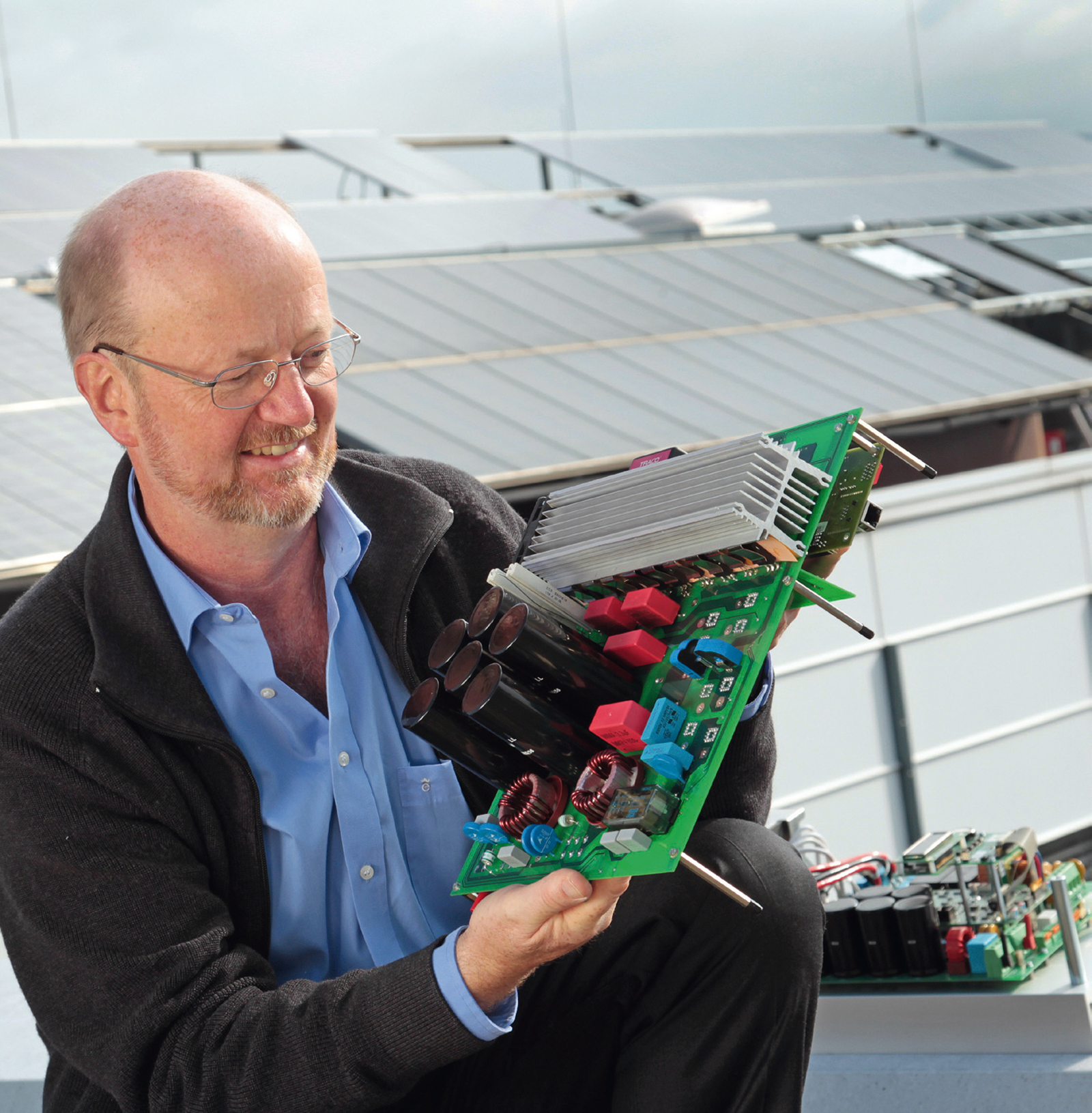Solar inverters: losses are cut in half
A switching trick makes it possible to cut the losses of a series-production inverter in half and increase the efficiency from 96 to 98 percent. The HERIC®-topology makes it possible to achieve a world-record efficiency of more than 99 percent.
»It was a matter of minutes,« Dr. Heribert Schmidt remembers the day in spring of 2002. To find opportunities for improvement, he had often pondered about the switching plan of an inverter while in his office at the Fraunhofer Institute for Solar Energy Systems ISE in Freiburg, Germany. A sudden flash of inspiration – and a solution that was ingeniously simple came to his mind. He immediately went to get an inverter from the laboratory, laid a few new strips and installed two additional semiconductor switches. »Then it required only a little bit of work on the controls - and we already had the proof!« This is how the electrical engineer, who holds a doctorate in electrical engineering, described the revolutionary step in brief: the losses could be halved and the degree of effectiveness could be increased from 96 to 98 percent.
Key component for electricity feed
After the solar generator, the inverter is the second key component of a grid-linked photovoltaics system. Solar modules generate direct current. If the current is to be fed into the public grid, then it must be converted into grid-compatible alternating current. The inverter handles this task. Single-phase feed inverters consist of three essential parts: the buffer capacitor at the input which provides intermediate storage for the direct current from the solar generator; the inverter bridge with four semiconductor switches that »chop up« the direct current by rapidly switching on and off and as a third component, the inductor at the output that converts the alternating current into a perfect sinus current.
In a short time from the idea to the product
Heribert Schmidt knew: A large portion of the losses are caused by the return of current between the output inductor and the input capacitor. The question therefore was how to prevent this. »That‘s easy,« said Heribert Schmidt after a sudden inspiration: »If I decouple the capacitor and the inductors completely from each other at certain intervals, then it is impossible for a return current to flow, and electro-magnetic disturbances cannot occur at the input as a result of voltage spikes.« He immediately had his invention patented as HERIC® topology and began to develop a new series of devices with the SUNWAYS company in Konstanz, Germany. Experts were astonished, and awards and recognition followed quickly: »By far the best device in this performance category.« In the meantime, an encompassing patent has been awarded to the basic idea and the Fraunhofer-Gesellschaft is in negotiations with additional licensees.
The director of the institute, Prof. Eicke Weber, emphasizes, »In 2009, a world record of more than 99 percent efficiency was set for inverters.« Heribert Schmidt – who has been with the Fraunhofer Institute for Solar Energy Systems ISE since 1988 – is an experienced inventor with more than 20 awarded patents. The HERIC® patent provided the institute with lucrative licensing agreements – and Heribert Schmidt with the Fraunhofer Prize.
